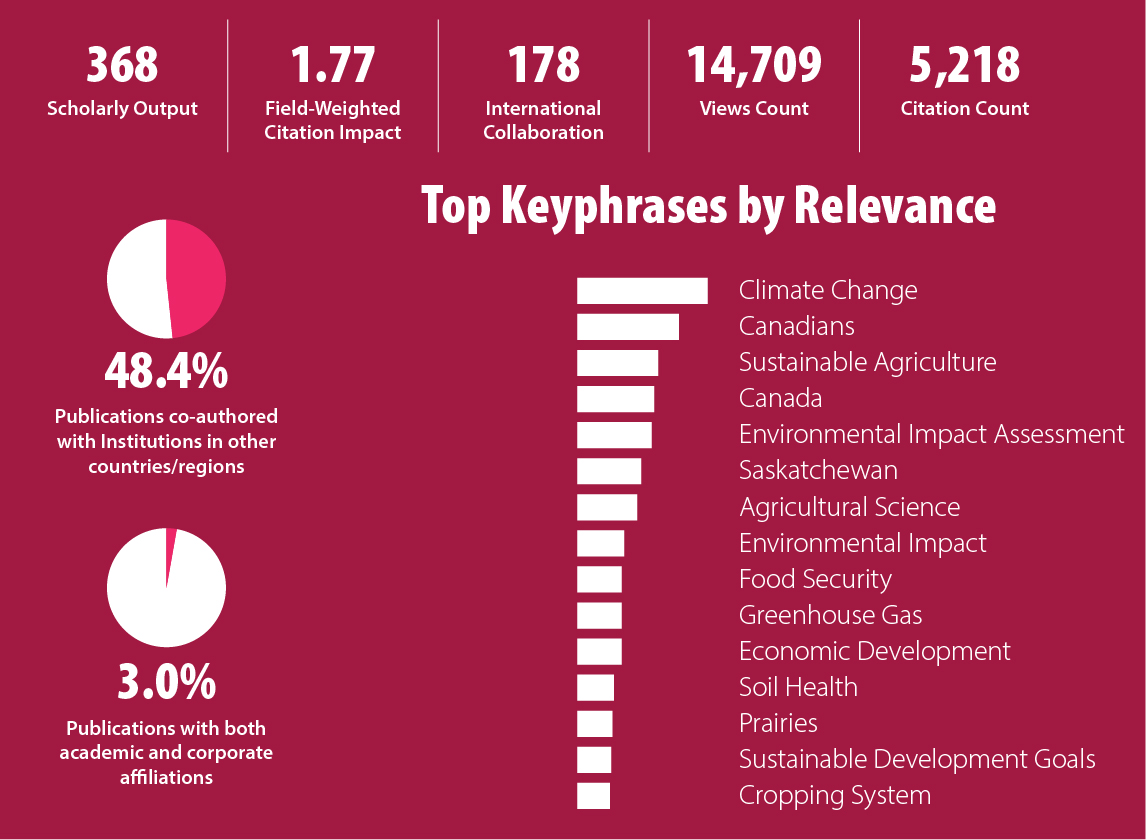Key Facts

News
Institutional Stewardship Initiatives
Strong Unions at USask
USask houses 6 distinct union groups with collective bargaining agreements:
-
The Administrative and Supervisory Personnel Association (ASPA)
-
The Canadian Union of Public Employees, Local 1975 (CUPE 1975)
-
The Canadian Union of Public Employees, Local 3287 (CUPE 3287)
-
Public Service Alliance of Canada (PSAC)
-
Resident Doctors of Saskatchewan Agreement (RDoS)
-
University of Saskatchewan Faculty Association (USFA)
At any given time, approximately 80% of individuals employed at USask are in scope of one of these unions. This demonstrates USask’s support for the labour rights of all employees, including freedom of association and collective bargaining. Each union engages in collective bargaining with USask to establish and maintain collective agreements which guarantee items such as benefits, vacation, leaves, employee protections, and more.
Employment and Compensation Equity
USask maintains policies and procedures to support employment equity at USask. USask’s Equity, Diversity, and Inclusion policy requires that members of USask comply with all legislation related to human rights and employment equity. For example, Canada’s Employment Equity Act requires that every employer shall implement employment equity by:
-
identifying and eliminating employment barriers against persons in designated groups that result from the employer’s employment systems, policies and practices that are not authorized by law; and
-
instituting such positive policies and practices and making such reasonable accommodations as will ensure that persons in designated groups achieve a degree of representation in each occupational group in the employer’s workforce that reflects their representation in
-
-
(i) the Canadian workforce, or
-
(ii) those segments of the Canadian workforce that are identifiable by qualification, eligibility or geography and from which the employer may reasonably be expected to draw employees.
-
As a second example, USask adheres to the Saskatchewan Employment Act, which specifies that discrimination in pay is prohibited. Specifically, the Act states that no employer shall pay an employee of one sex at a rate of pay less than the rate paid to an employee of another sex if:
-
they are employed by the employer for similar work that is performed in the same workplace under similar working conditions; and
-
the performance of the work requires similar skill, effort and responsibility.
In addition to adhering to the relevant legislation regarding pay equity, USask takes additional steps to pursue equity and fair pay for employees. Negotiated pay scales determined by the collective bargaining processes provide a pay range within which university employees will fall.
To more precisely determine compensation for an employee, USask employs a matrix within our compensation model. This matrix looks at an employee’s work experience, education, proficiency/role fit, market rates for comparable roles, and internal equity. Employees may receive regular pay raises based on market adjustments, service-based increments, as well as merit-based increases or bonuses for exceptional performance.
As well, some collective agreements include additional measures to address gender pay equity. For example, as of the 2014 collective agreement, USFA includes a pay equity balancing fund to support increases for female faculty where pay inequity exists. USFA’s most recent collective agreement now includes a Gender Equity Salary Correction.
The USask Compensation Team completes regular internal reporting on gender pay equity on all employee groups and position types, so that USask leadership can monitor pay equity at USask and respond accordingly. The team pays close attention in particular to monitoring for gender equity in performance-based pay increases, as this is where the most risk of discrimination exists within USask’s compensation model.
USask endeavors to pay a living wage to its staff and achieves this goal in a majority of cases. Based on the living wage rates reported in the 2023 study by the Canadian Centre for Policy Alternatives, over 92% of all USask employees are paid above a living wage.
In addition to strong wages, USask offers valuable comprehensive benefits packages, professional development funds, and 100%-matched pensions to its employees, making employee “total reward” packages extremely valuable above and beyond their excellent wages.
Research Institutes, Centres, & Projects
Coming Soon!
Research Impact

Sample Courses
This course is an introduction to occupational health, industrial hygiene, and the relationship of the work environment to the broader environment. It will provide an overview of occupational hazards and illnesses including their recognition, control and prevention, as well as, the relationship between workplace exposures and the broader environment. This course includes an introduction to compensation and regulatory issues along with site visits to selected industries and job sites.
An introduction to the economic analysis of environmental issues. It will include analysis of environmental quality, benefit-cost analysis, and evaluation of different environmental policies and their application in Canada and Saskatchewan. It will conclude with analysis of global environmental issues.
Management is most effective when human resource systems are internally consistent and aligned with organizational strategic objectives. Students learn fundamental concepts in managing people, with an emphasis on identifying the appropriate practices to apply to different organizational contexts and management situations.
This course will examine the politics and social reproduction of work in Canada. It will begin by examining how working people have responded to workplace conditions, beginning in the 19th century and moving to the present day. Here we will examine work broadly, focusing on how both paid and unpaid labour is shaped by class, gender, race and other forms of social inequity. The course will then look at how governments regulate work in the 21st century, examining how employment is structured as a strict legal relationship between those who sell their labour for a wage and those who purchase that labour in order to create additional value through profit. Examining these intersections, the class will then examine the numerous legal structures that shape the modern workplace, focusing on rules of unionization, individual employment relations, and occupational health and safety.
For a full listing of related courses, please visit the Office of Sustainability's sustainablity course inventory.
